Helen Hunt, 60, Stuns During Her Latest Appearance, and Her Lips Become the Center of Attention

The Seahorse is an unusual fish. Normally, female animals carry a child, but seahorses do it the other way around. For 9 to 45 days the future father carries the eggs inside a special pouch until the birth process begins. Then, the male opens his brood pouch, and squeezes out the children.
The female anaconda finds the deepest puddle and spends her pregnancy in it. She will starve for about seven months while pregnant! Then she will give birth to 40 children that make up 30% of her body weight. Her babies are completely independent and will explore the world around them.
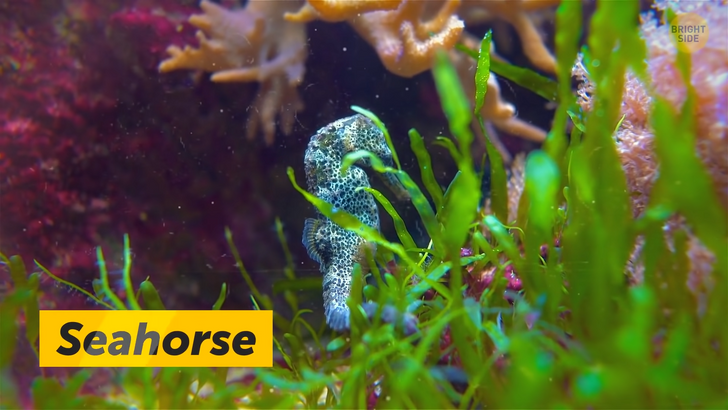
The Surinam Toad looks like a normal toad but is totally flat. Unlike most animals, this one carries its future children not inside, but on its back. Female toads have special “holes” on their backs for each egg, where the babies develop. After 3 to 4 months the little Surinam toads “wake up” and crawl out of the pockets on mom’s back.
Kangaroos are born just one month after conception, but they’re not yet ready for life in the outside world. Newborn kangaroos are smaller than an inch. These tiny creatures crawl into their mom’s pouch using their front legs. After 195 days, the kangaroo grows big and strong enough to leave the pouch.
Sea Urchins lay more than 2,000,000 eggs, but not all survive. Male and female urchins throw something like a cloud into the water, which contains the future offspring. In the next few hours, if the egg cloud is not eaten by other sea creatures, the eggs will turn into a ball with microscopic hairs and then form a skeleton. At this point, they’re ready for their own reproduction.
Most animals either lay eggs or have a live birth. But the Jackson’s chameleon does both and gives birth to up to 30 young at a time! The female bears the eggs, minus a shell, right inside her body, instead of laying them as many other chameleon species do.
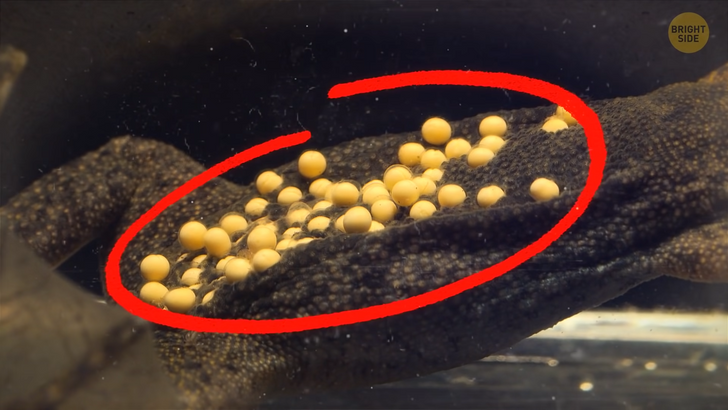
In the Yellowhead Jawfish family, a dad-fish takes care of the future offspring. The male broods the eggs inside his mouth. Even after the birth, the male carries his babies in this “safe place”. The brooding method lets the father keep his children safe because he can swim away from danger with the babies in his mouth.
Sloths spend most of their time on the treetops. Their birth process is extravagant. The female lets her hind legs dangle and clings to a branch only by her front ones and gives birth in this position. The baby-sloth grabs the mother’s fur right after birth and climbs to her chest.
The Velvet Spider builds a special “room” for giving birth and childcare. Just like weaving a spider web, she constructs a cocoon around her, where she lay up to 80 eggs. Then she makes a hole in the cocoon so that the offspring can escape. But this hole is too small for her, so she will never come out. For two weeks, she will feed the hatched spiders until they become independent.
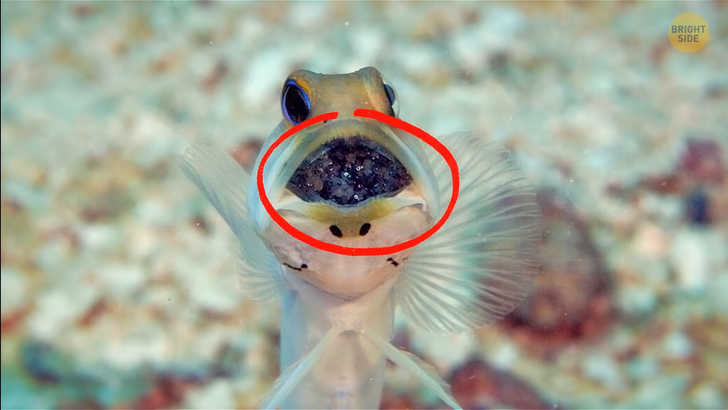
Whales — the biggest mammals in the animal kingdom — give birth underwater, so their babies have to rise all the way up to the surface to take their first breath. Mom-whale will feed the baby with 54% fat milk for the next 4 months until it grows enough to eat on its own.
Octopuses give birth only once in a lifetime. One of the arms of the male octopus is adapted to fertilize females. Some octopuses separate the arm from their body and give it to the female. After laying eggs, female octopuses circulate water currents over the eggs to clean them and protect them from predators.
Imagine giving birth to a baby the size of a four-year-old. Poor mother! But that’s what kiwi birds do. Their eggs can weigh up to a quarter of their body mass. To produce such a big egg, female kiwis have to eat three times more than usual.
Shingleback lizards also have a difficult pregnancy. These animals normally have up to 2 babies, which doesn’t seem so bad. But the babies can make up a third of the mother’s weight. That’s like a human giving birth to a 7-year-old!
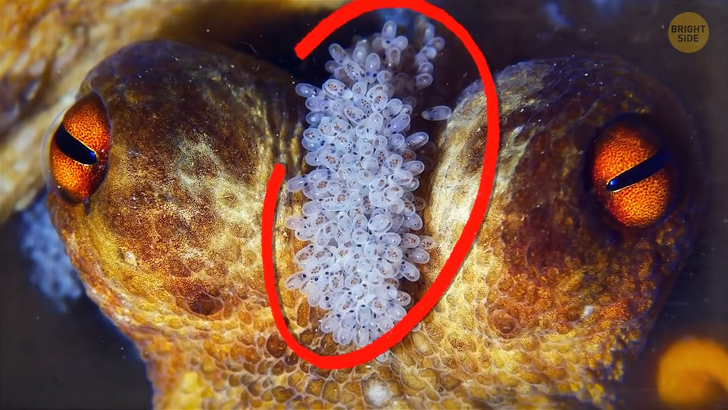
Giraffes are some of the tallest terrestrial animals, which has an effect on the birth process. In a giraffe birth, the baby first pokes out the front hooves, then the nose and the entire head. Within an hour, the baby is born. Before taking the first breath, the baby giraffe falls from the height of 6.5 feet to the ground.
Hammerhead Sharks can give birth without mating with another shark. Basically, they’re just making copies of themselves. This was first discovered in 1999 in a Nebraska Zoo. There are just a few other animal species, like some geckos and lizards, that can reproduce this way.
Porcupines are known for their sharp quills. In the womb, these quills are soft, but right after birth, when coming in contact with air for the first time, they become hard and sharp.
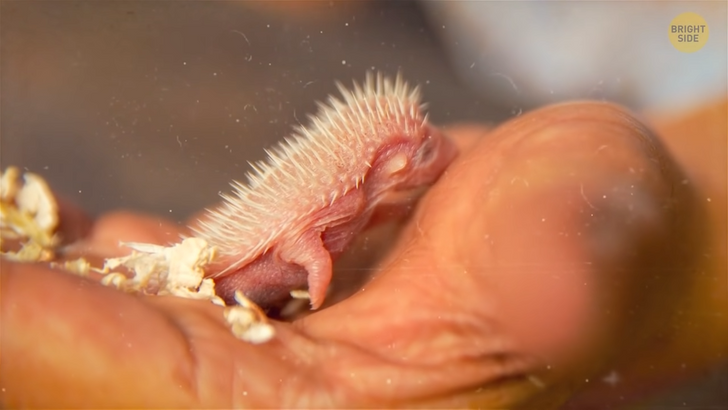
Naked mole rats are incredibly reproductive. They live in colonies and have a queen, who is the only female to give birth. First-time moms can have up to 15 babies, but every litter after, the number of babies grows. At her peak, a mole rat queen can have up to 33 babies, which is the largest litter size of any mammal on Earth.
Hippopotamus pregnancies last about 8 months, despite the animal’s big size. When ready to give birth, Hippo moms leave their herd for 2 weeks to establish a strong connection with their babies. Hippo calves are born underwater, so they learn to swim from the very beginning.
Zebras have a really hard time after birth — both for mom and the baby. Zebras are an animal who can see a newborn baby as a potential threat in the future. So, when a baby zebra comes out, a male zebra can attack it immediately. The mother protects its offspring, often not having any time to rest.
Elephants have the longest gestation period of all mammals, lasting more than 18 months. Though they live up to 70 years, most elephants won’t have more than 4 babies. When the elephant mom is ready to give birth, other elephants from the herd form a protective circle around her until she delivers a baby. At birth, they weigh up to 260 lbs.
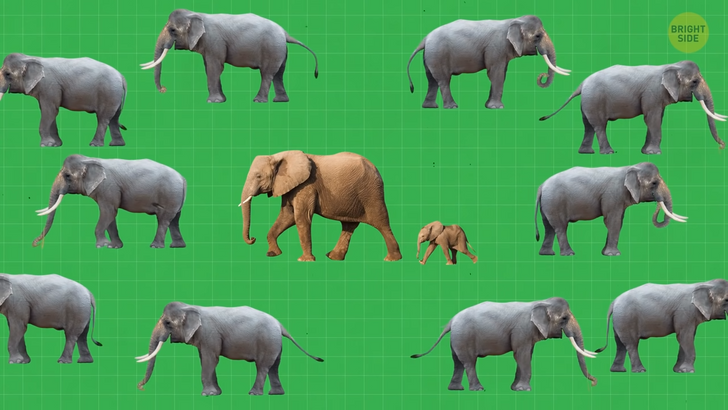
To protect them from predators, Barnacle geese lay eggs on a cliff at 400 feet, which is the height of a 36-story building. When the eggs hatch, the little chicks face a problem: there’s no food nearby because they’re on a rock! So, at just a few days old they jump off the cliff and try to make a soft landing.
Though Marine Iguanas don’t have to leap off a cliff, they’re also in a hurry soon after they’re born. Female Marine Iguanas lay eggs in an underground cave that they dig. This is a safe place to hide from predators, but sooner or later the baby iguanas come out of these caves to eat. And this is the moment when snakes start to hunt them. The fastest and strongest iguanas survive to enjoy the food.











